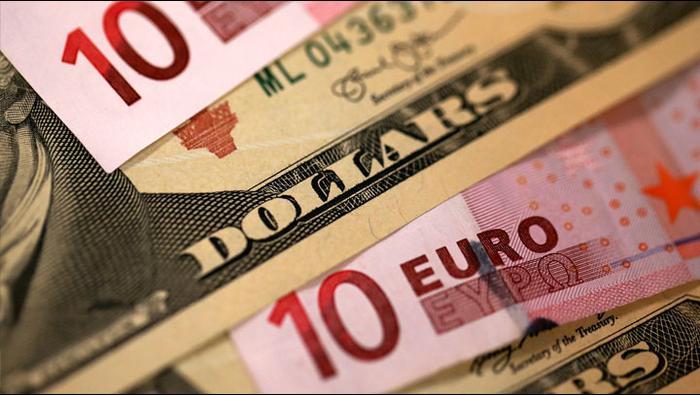(BFM Bourse) – Since the beginning of the year, the euro zone currency has gained ground against almost all the other major currencies of developed countries with the exception of the Swiss franc and the pound sterling.
The euro is taking its revenge against the dollar this year. Since January 1, the eurozone currency has gained 3.1%
against the greenback, now exceeding $1.10. Over one year, this increase rose to 4.6%. These increases are relatively significant because the variations are never very high on the currency market, the most liquid in the world, with volumes that can reach 7,500 billion dollars per day.
But the euro is not only gaining ground against the dollar, a safe haven which has suffered since the beginning of the year with the return of risk appetite.
The Eurozone currency has recorded substantial gains against many other currencies of developed countries since the start of the year: 2.7% against the Canadian dollar, 3.8% against the New Zealand dollar, 4.4 % against the Australian dollar, 5.5% against the yen and 11% against the Norwegian krone. We can also cite a 3% increase against the yuan.
Only two currencies “resist” the euro. And again, the case of the pound sterling is debatable. The euro certainly fell by 1% against the British currency at the start of 2023, but it remains up by more than 2.2% over one year.
The Swiss franc, the last soldier
The only real exception remains the Swiss franc, the euro falling by 0.7% against the Swiss currency since January 1, a gap which has widened to 5.7% over one year. The Swiss currency was only temporarily affected by the banking turmoil in March, which particularly affected Credit Suisse, the country’s second-largest bank. The currency is supported by moderate inflation in Switzerland, with price rises standing at just 2.9% year on year in March, more than half that of the euro zone.
Why is the euro bullying the other major currencies of developed countries? Much of the answer lies in the monetary policy of the European Central Bank (ECB). While inflation remains high, the central bank is lagging behind its counterparts in its monetary tightening cycle and must therefore raise its rates again, which obviously supports the currency.
On Thursday, it raised rates by 25 basis points (0.25 points) and its president, Christine Lagarde, stressed that a pause was not on the agenda, the ECB still having “some way to go”. travel” to bring inflation back to the 2% path. [elle adopte un ton restrictif, NDLR]”Things have improved dramatically for the euro over the past few months. The ECB is now ‘hawkish’ [Réserve fédérale américaine]it raises rates faster and for longer than the Fed [de la zone euro, NDLR] and its communication is clearer and more consistent, including during the recent banking turmoil,” Bank of America explained in late March. “The economy
is resilient” and “the terms of trade have improved thanks to lower energy prices” and the reopening of China, added the American bank. […] “Currency despised yesterday, the euro has experienced a very significant blowback since the fourth quarter of 2022 and today appears as one of the favorite currencies of investors, in particular because of the calm that has been hovering over Europe for several weeks and month
but also an attractiveness reinforced by expectations of higher European bond yields under the impetus of a possible extension of the monetary tightening policy on the part of the European Central Bank until July”, developed for his part Guillaume Dejan , currency strategist at Western Union, in a recent note.
Moreover, the economic situation held up better than the market had expected. The euro zone avoided recession, with GDP growth of 0.1% in the first three months of 2023, according to Eurostat.
Still potential?
It remains to be seen whether the euro will continue this good course. The research departments believe that the currency still has room to appreciate against the dollar. UBS sees the euro-dollar climb to 1.16 dollars by the end of the year, Deutsche Bank suggests a range between 1.15 and 1.20 dollars.
“From a pure valuation point of view, the European currency has only made it halfway, and even a little more against currencies such as the two Nordic kroner (Norwegian and Swedish) or even against the Canadian dollar. and the New Zealand dollar,” said Guillaume Dejan.
“Given the current levels of volatility in equity markets – relatively low – it’s a safe bet that the euro’s ascent is probably not over and could still accelerate sharply in the event of financial shocks”, adds – he.
As for the pound sterling and the Swiss franc, UBS believes that the two parities should remain relatively stable. The Swiss bank is banking on the euro at 0.97 Swiss francs in June (against 0.98 francs at present), a level which would then be maintained. For the pound sterling, UBS estimates that the euro should register at 0.87 pounds in June and then remain at this level until March 2024, i.e. almost the same exchange rate as at present (0. 88 pounds for one euro).
The variations were stopped Friday at noon.Julien Marion – ©2023 BFM Bourse
Source link -84
